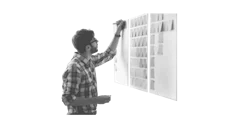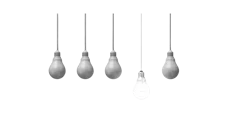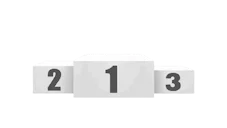

Where Thought Leaders go for Growth


Do columns and colored post-it notes sound familiar? If you've ever heard the term Kanban workflow, you can certainly imagine what it looks like. Kanban boards rely on a system of labels that indicate the work that has to be done, is in progress or has to be completed.
Although the Kanban method was inspired by the automotive industry in Japan and used for inventory and supply chain management, today, it can be used in agile project management.
So, what is Kanban, and how is it used in agile project management?
Here is a complete guide on what a Kanban workflow is and how to build one in 5 easy steps:
💡 Kanban or “Kamban” is a Japanese term that translates to"card", "signboard" or "billboard".
The Kanban method is a visual organization system that consists of labels (or kanbans). Each label corresponds to a customer request that activates the production line when necessary. This optimizes resource management.
Initially, the Kanban method was a scheduling system for lean manufacturing based on the "just-in-time" principle which is used to maintain a balance between demand and supply. A company would manufacture a good once the order has been issued by the customer, instead of building up stocks.
With the emergence of SaaS businesses and agile project management, Kanban workflows can now be used in agile software development to improve organization, distribution, and task planning.
Kanban and agile software development work well together because :
ℹ️ Note: except for the last one, these disadvantages do not apply to the IT field.
There are 6 rules to be seriously take into consideration and respected, which are:
In Kanban boards, tasks are represented by colored labels or cards (usually post-it notes).
Tasks are categorized and placed on the kanban board in the column corresponding to its status, for example :
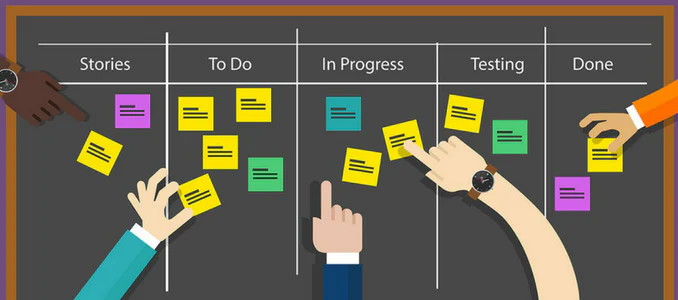
© Thinkthyme
💡 Your Kanban board should contain the number of columns that correspond to your organization the most. We recommend using at least three columns: To Do, In Progress, and Done.
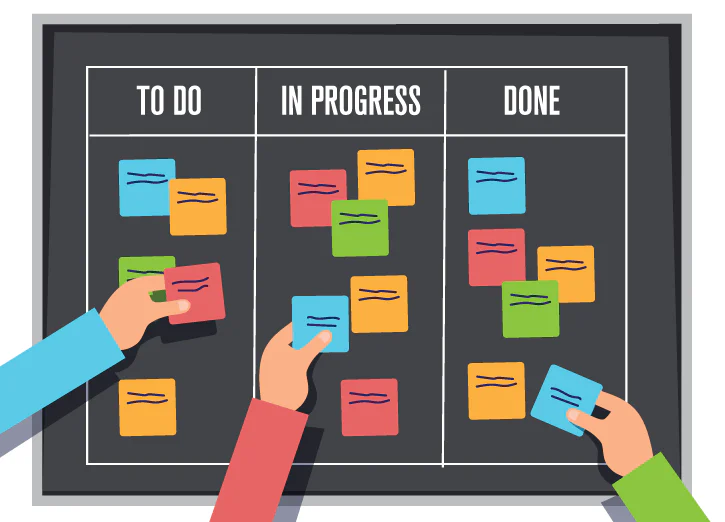
© Integrify
When you start a project, you must divide the tasks, and therefore the labels, per team member. The first step is to place all the labels in the first "To Do" column.
As the project progresses, the kanban board visually reflects the completion of the tasks: the label moves from column to column until it reaches the "Done" column.
A color code can be used depending on the nature of the request ("task", "bug", "feature", etc.) or the person responsible for the task.
To track the status of a project, present each user story in the form of a map and position it on the Kanban board according to its status.
Here is an example of a Kanban board in agile project management:
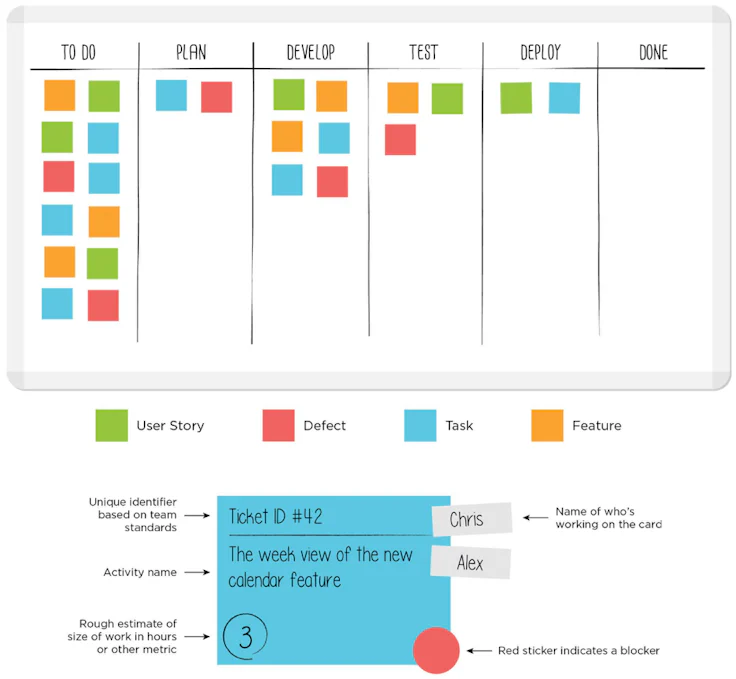 © Hive
© HiveStart by identifying the process you want to improve. Please note that Kanban workflows are not meant to replace processes. They provide flexibility by promoting real-time communication and collaboration between team members.
As you begin your project, you start your workflow. With the agile method, seen previously, you have defined the duration of a sprint (one week, two weeks, one month) to work in iterative mode.
Each sprint starts with a task schedule :
As the tasks progresses, update your kanban board and move the labels from one column to the next until you reach the To-Do column.
ℹ️ The Kanban method is both incremental (works in stages) and iterative (works in cycles). It ensures continuous and evolutionary changes.
To make sure that all stakeholders are aware of the latest updates of your team, it is essential to promote a collaborative working environment. This is even more important for remote teams or teams working on different sites.
❓ How do you monitor the Kanban workflow when every team member does not have access to the table to view the tasks?
✅ With SaaS software, of course! With software that is available online, team members can view projects, Kanban boards, and share information. With online Kanban tools, you can:
Here are some project management tools that can be used to manage Kanban workflows:
Jira: a project management tool that was designed for software development and planning with Scrum, Kanban or mixed methods;
monday.com: an intuitive work management platform that offers a very complete Kanban view and an ergonomic online portal that integrates into your IT environment thanks to its numerous interfaces;
Trello: An intuitive and free task management tool in the form of a virtual Kanban board, very easy to use with drag & drop features.
Although both of these agile practices promote team collaboration, they differ in several ways:
If your work environment often has to adjust its priorities, Kanban is more suitable, while Scrum is suitable for teams that need to focus more organization and structure.
What about Scrumban? This method combines the Scrum method with the Kanban method and at the same time promotes project management with continuous flow.
There are no longer sprints, but prioritized tasks. It can be applied to mixed project portfolios and multiple teams. Flexibility and adaptability are essential.
After all, the choice of method depends on the team organization and culture in order to determine its best way of working.
Have you already tested Kanban workflows? If so, how do you use it, and how does it help you to manage your projects efficiently?





